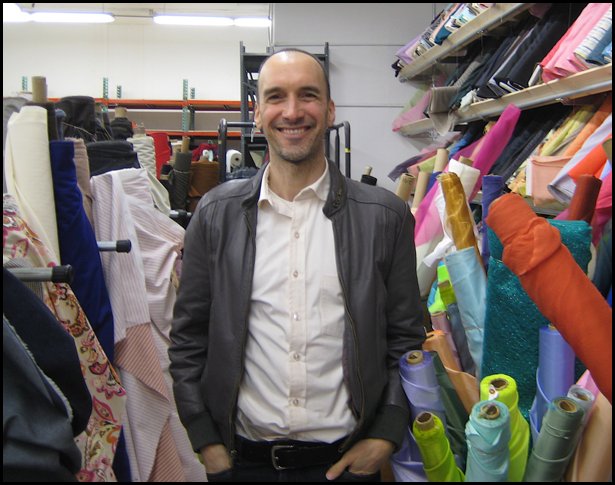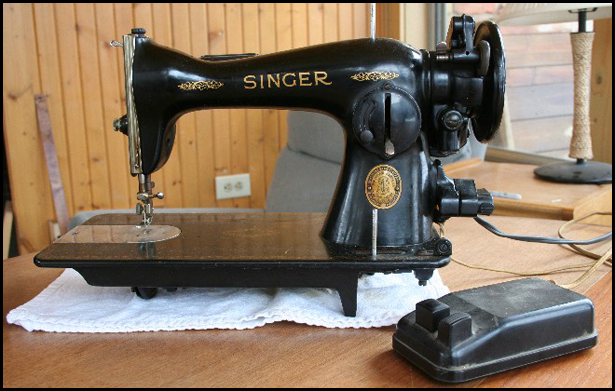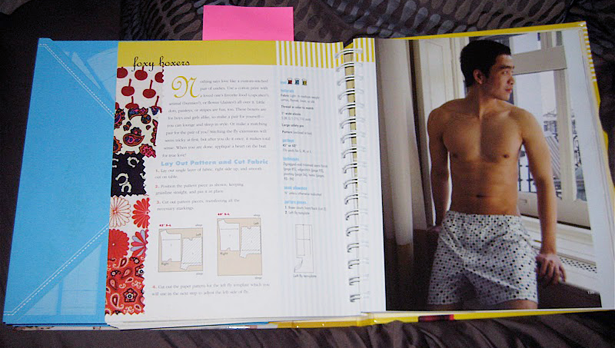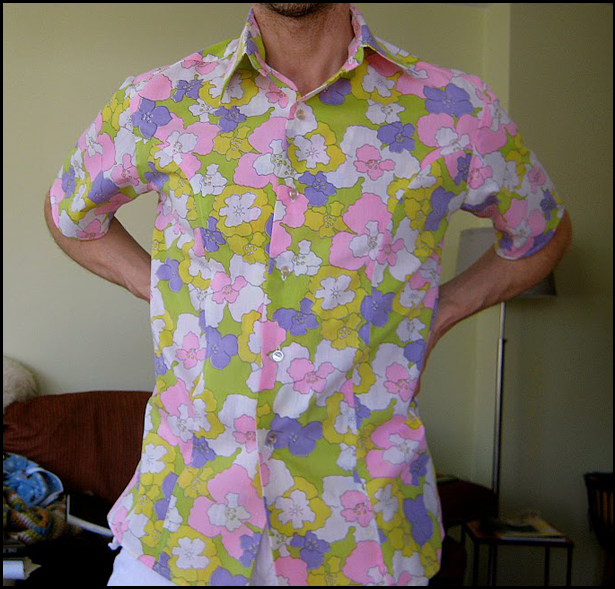Learning to Sew: Peter's Top Ten Tips!
 |
| Learning to Sew: Peter's Top Ten Tips! |
learning to sew - Tips & Techniques
by Peter Lappin
I am often asked how I learned to sew and what advice I would give beginners. Since I started sewing only two years ago, it’s all very fresh in my mind!
So here, in no particular order, is my entirely subjective, highly biased top ten tips list:
1. Start off with a good machine. I can’t imagine anything more discouraging than learning to sew on a temperamental sewing machine. You may know by now that I am extremely biased toward vintage machines, straight stitchers in particular. But most people these days start with zigzaggers and that’s OK too.
Here in the USA, good used machines can be had for less than $50 on Craigslist, eBay, and at many local thrift stores. Maybe your neighbor or a family member has one in storage. Make sure you clearly ask the seller/donor whether the machine has any mechanical problems. The last thing you need is to bring home your first sewing machine and discover the bobbin winding mechanism doesn’t work or the cams are cracked (if it has embroidery cams). A manual is always helpful and if missing, can usually be downloaded online for a few dollars.
There’s nothing wrong with spending more for a high quality machine, but when you’re starting out you don’t really know which features you’ll value most. I recommend thinking of your first machine as a starter and spending the big bucks later, if at all. Doesn’t that makes sense?

2. Avoid (avoidable) complexity. The simpler the machine the less is likely to be/go wrong with it, which is why I like old straight stitch machines. If you’re interested in making clothes, you don’t need fancy embroidery stitches, which is the selling point for new machines. Nothing has changed mechanically in decades and little (if anything) has improved. I know that some people prefer a new machine and that’s fine. Just keep it simple and don’t let yourself be wowed by fancy computerized geegaws you’re unlikely ever to use.
3. Buy yourself a good beginner’s book. In my experience, there aren’t that many of these. There are countless excellent encyclopedic sewing guides, like the Readers Digest guide, and these are great to have on hand for reference, but I would not use them to get started — too much info.
My favorite beginner’s sewing book is Diana Rupp’s Sew Everything Workshop. Diana walks you through step-by-step in the gentlest, most caring way, and the book itself is beautiful to look at AND spiral bound, which is a tremendous help. It also includes many simple patterns for some basic garments and home dec items that are cute and trendy (and on real pattern paper too). They’re mainly for women, of course, but not exclusively. I made my first garment — a pair of boxer shorts — from a pattern in Diana’s book and I still wear the results!

4. Start small. If you follow Diana’s book you won’t have to think about this. It’s more fun to sew something simple and do it well than to tackle something too advanced and be disappointed with the results. You’ll learn either way, for sure, but some of us get very discouraged when our results don’t match our expectations. Whether we’re making a pencil case or an evening gown, choice of fabric and other details is going to make a huge difference in our enthusiasm and happiness with the result. It’s not what you sew but how you sew it.
5. Practice. Like any other skill, sewing takes some practice. After a while things that seemed difficult at first, like matching the edges of two separate pieces of fabric at 5/8", become second nature. When I got my first sewing machine, I just loved to sew scraps of fabric together — any fabric. It all seemed very miraculous to me at the time and still does!
6. Lower the stakes. A lot of perfectionists are drawn to sewing. I’ve sewn many dozens of garments, and some turn out better than others. I try not to make sewing a reflection of my self-worth. Sewing should be fun, even when it’s challenging. With skill you can make some fantastic things but ultimately, most of us don’t have to sew to have clothes to wear. Many of us already had bulging closets before we even picked up a needle. Sew like a child and enjoy it. You’re only going to get better with practice.
7. Make up your own rules. I am a big believer in trusting one’s intelligence. Some things you read in a sewing book or in pattern directions — how to insert a zipper, say — may sound unnecessarily complex. Don’t be afraid to try it your own way. The people who wrote those directions are just people. Maybe there’s a simpler method and YOU are the person who will have discovered it. If it doesn’t work, you’ll have learned something. You have nothing to lose provided you’re not experimenting on your nearly-finished garment made of $75/yd. silk shantung!
8. Find a sewing community. I could not have learned as fast as I have without the support and encouragement of Burdastyle and Pattern Review members. Sewing friends are tremendously valuable, not only at the beginning but all along your sewing journey. Having a community makes sewing so much more fun. A dirty little secret is that I rarely looked at sewing blogs until I started Male Pattern Boldness, but some of the blogs I enjoy most are written by people who are just starting out because I can relate to their sewing challenges — and their enthusiasm.
9. Make sewing your play and not your work. Life is stressful enough without adding even more stress. Sewing can be challenging, especially when things aren’t working out the way you’d like them to. Remember why you’re sewing in the first place. You didn’t learn to walk in a day or in a week and you’re not going to master sewing in that amount of time. But imagine how much you’ll know a year from now if you just keep plugging along, making mistakes and learning from them. Just keep going and maintain a sense of humor.

10. Make something you really like. I’ve heard a lot of stories from people who were taught — and turned off — sewing in Home Economics class where they were forced to make something they hated, like an apron or an ugly skirt. As an adult, you make the rules. It’s much more inspiring to sew something you might actually want to wear. You don’t have to pay a lot for the fabric (Pick up some old sheets!). I also think sewing for oneself, especially at the beginning, is more fun than sewing for others. You don’t have to please anyone but yourself and you know best how you want something to look or fit.
BONUS ITEM!
11. Take a class. Don’t take a class. A lot of people ask me if they should take a class. Some people really enjoy the social aspect of a class or the way a class organizes their week or (potentially) keeps them from making costly mistakes. I didn’t take a class though I wouldn’t rule it out for the future. I’d recommend that anybody who wants to take a class take one and anybody who wants to learn on their own do so. It’s not either/or.
I will say that given the tremendous amount of information available in books, DVDs, on YouTube videos, sites like BurdaStyle, and blogs, nobody has to take a class to get the information they need. All those “sewing secrets” have already been revealed!
So wise readers, anything to add? Anything that would be in your top ten that I haven’t included?
How did you learn to sew?
~Peter
When native New Yorker Peter Lappin bought his first sewing machine two years ago to hem a pair of thrift store jeans, little did he know he was initiating a journey that would bring him fame and fortune. While awaiting his fortune he stays busy writing “the world’s most popular men’s sewing blog,” Male Pattern Boldness, and now contributing to BurdaStyle.
“For more than twenty years I’d lived on the edge of the Garment District without even knowing what a seam ripper was. Now I rip daily!”
With the information we provide about learning to sew
, We hope you can be helped and hopefully set a precedent with you . Or also you can see our other references are also others which are not less good about How to measure for a shirt
, So and we thank you for visiting.
open tutorial sew : http://www.burdastyle.com/blog/learning-to-sew-peters-top-ten-tips




0 komentar:
Post a Comment